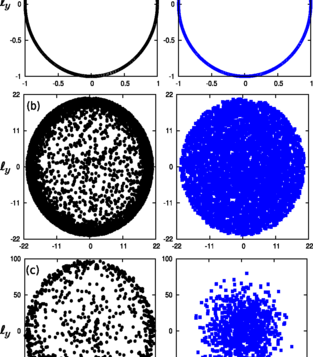Tromer, R. M., Barbosa, M. B., Bartumeus, Frederic, Catalan, Jordi, da Luz, M. G. E., Raposo, E. P., Viswanathan, G. M. . Physical Review E 92 : 022147 (2015) DIGITAL.CSIC
An important problem in the study of anomalous diffusion and transport concerns the proper analysis of trajectory data. The analysis and inference of Lévy walk patterns from empirical or simulated trajectories of particles in two and three-dimensional spaces (2D and 3D) is much more difficult than in 1D because path curvature is nonexistent in 1D but quite common in higher dimensions. Recently, a new method for detecting Lévy walks, which considers 1D projections of 2D or 3D trajectory data, has been proposed by Humphries et al. The key new idea is to exploit the fact that the 1D projection of a high-dimensional Lévy walk is itself a Lévy walk. Here, we ask whether or not this projection method is powerful enough to cleanly distinguish 2D Lévy walk with added curvature from a simple Markovian correlated random walk. We study the especially challenging case in which both 2D walks have exactly identical probability density functions (pdf) of step sizes as well as of turning angles between successive steps. Our approach extends the original projection method by introducing a rescaling of the projected data. Upon projection and coarse-graining, the renormalized pdf for the travel distances between successive turnings is seen to possess a fat tail when there is an underlying Lévy process. We exploit this effect to infer a Lévy walk process in the original high-dimensional curved trajectory. In contrast, no fat tail appears when a (Markovian) correlated random walk is analyzed in this way. We show that this procedure works extremely well in clearly identifying a Lévy walk even when there is noise from curvature. The present protocol may be useful in realistic contexts involving ongoing debates on the presence (or not) of Lévy walks related to animal movement on land (2D) and in air and oceans (3D).


